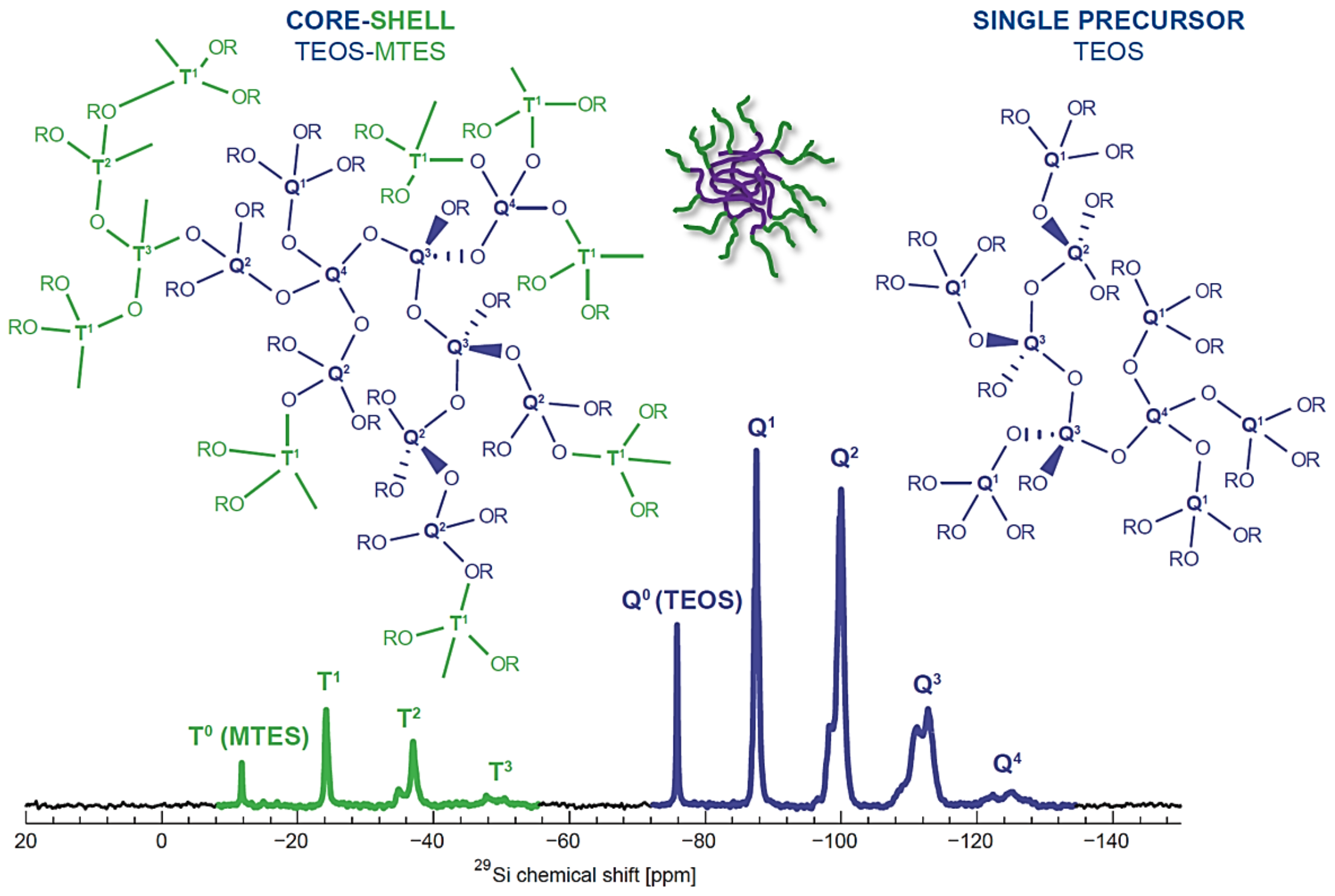Novel hyperbranched organofunctional polyalkoxysiloxanes: versatile precursors for molecular-level design of advanced colloidal materials
Organic-inorganic hybrid materials combine the robustness of inorganic materials with the multiplicity to design specific function and chemical interactions of organic chemistry [1]. Despite tremendous progress in preparative techniques, many synthetic protocols either offer only limited control over the colloidal material substructure, are not industrially scalable or both. Particularly in the field of organosilica hybrids, the controlled "substructuring" at the nanoparticle or colloid level is hampered by poor molecular-level control over its building blocks, particularly when using hydrolytic chemistry protocols.
Inspired by the works of the Möller group [2], we present a new class of core-shell-type organofunctional polyalkoxysiloxane molecular building blocks. These compounds are liquids at room temperature in neat form and can be thought of as star-polymers made of Q-type siloxane moieties in the core and T-type organofunctional moieties grafted at the extremities of its dendritic arms. In this presentation, we will address the non-hydrolytic synthesis and characterization of these novel building blocks as well as give an outlook into applications in colloidal materials synthesis.

[1] Bruce M. Novak; Adv. Mater., 1993, 5(6), 422-433
[2] Zhu, X.; Jaumann, M.; Peter, K.; Möller, M., Melian, C.; Adams-Buda, A.; Demco, D. E.; Blümich, B.; Macromolecules, 2006, 39, 1701-1708